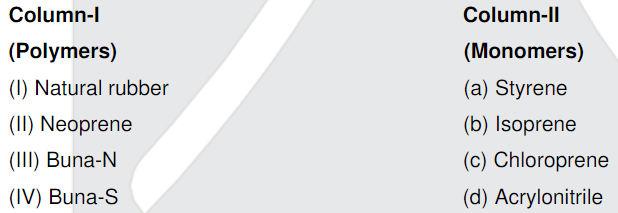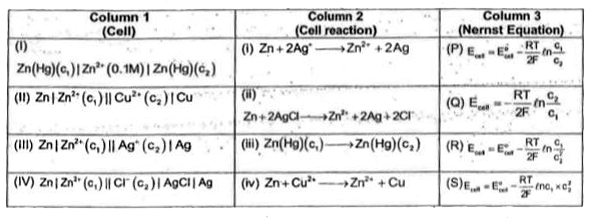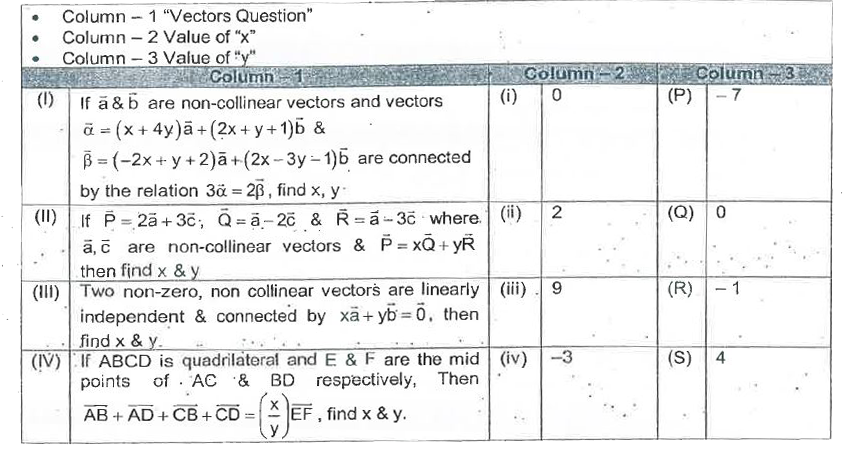14gm of element X combine with 16gm of oxygen. On the basis of this information, which of the following is the correct statement .
The element 'X' could have atomic weight of 7 and its's oxide the formula XO
The element 'X' could have atomic weight of 14 and its's oxide the formula X2O
The element 'X' could have atomic weight of 7 and its's oxide the formula X2O
The element 'X' could have atomic weight of 14 and its's oxide the formula X2O
The correct Answer is:C
To solve the problem, we need to analyze the information given about the element X and its combination with oxygen.
Step 1: Determine the Molar Mass of Oxygen
The atomic weight (molar mass) of oxygen is given as 16 g/mol.
Step 2: Determine the Molar Mass of Element X
We know that 14 g of element X combines with 16 g of oxygen. We can use this information to find the possible molar masses of element X.
Step 3: Calculate the Moles of Oxygen
Using the molar mass of oxygen:
Moles of Oxygen=mass of oxygenmolar mass of oxygen=16 g16 g/mol=1 mol
Step 4: Analyze the Moles of Element X
Now, we need to find out how many moles of element X are present in 14 g. We can assume two possible atomic weights for element X: 7 g/mol and 14 g/mol.
1. If the atomic weight of X is 14 g/mol:
Moles of X=14 g14 g/mol=1 mol
The formula of the oxide would be XO.
2. If the atomic weight of X is 7 g/mol:
Moles of X=14 g7 g/mol=2 mol
The formula of the oxide would be X₂O.
Step 5: Conclusion
Based on the calculations:
- If the atomic weight of X is 14 g/mol, the formula is XO.
- If the atomic weight of X is 7 g/mol, the formula is X₂O.
Thus, both atomic weights are possible based on the given information. However, the question asks for the correct statement based on the combination of X and oxygen.
Final Answer
The correct statement is that element X can have an atomic weight of either 7 g/mol or 14 g/mol, leading to the formation of either XO or X₂O.
---
The atomic weight (molar mass) of oxygen is given as 16 g/mol.
We know that 14 g of element X combines with 16 g of oxygen. We can use this information to find the possible molar masses of element X.
Using the molar mass of oxygen:
Moles of Oxygen=mass of oxygenmolar mass of oxygen=16 g16 g/mol=1 mol
Now, we need to find out how many moles of element X are present in 14 g. We can assume two possible atomic weights for element X: 7 g/mol and 14 g/mol.
Moles of X=14 g14 g/mol=1 mol
The formula of the oxide would be XO.
Moles of X=14 g7 g/mol=2 mol
The formula of the oxide would be X₂O.
Based on the calculations:
- If the atomic weight of X is 14 g/mol, the formula is XO.
- If the atomic weight of X is 7 g/mol, the formula is X₂O.
The correct statement is that element X can have an atomic weight of either 7 g/mol or 14 g/mol, leading to the formation of either XO or X₂O.
Topper's Solved these Questions
- MOLE CONCEPTBOOK - ALLENCHAPTER - MOLE CONCEPTEXERCISE - EXERCISE - 02
46 Videos
- MOLE CONCEPTBOOK - ALLENCHAPTER - MOLE CONCEPTEXERCISE - EXERCISE -03
13 Videos
- MOLE CONCEPTBOOK - ALLENCHAPTER - MOLE CONCEPTEXERCISE - Exercise - 05(B)
8 Videos
- IUPAC NOMENCLATUREBOOK - ALLENCHAPTER - IUPAC NOMENCLATUREEXERCISE - Exercise - 05(B)
7 Videos
- QUANTUM NUMBER & PERIODIC TABLEBOOK - ALLENCHAPTER - QUANTUM NUMBER & PERIODIC TABLEEXERCISE - J-ADVANCED EXERCISE
24 Videos
Similar Questions

Which of the following is correct combination ?
View SolutionOn the basis of Lewis concept, which of the following are correct?
View SolutionWhich of the following combinations is correct ?
View Solution
Which of the following combination is correct:
View Solution
Which of the following combination is correct:
View SolutionWhich of the following combinations is correct?
View Solution

Which of the following combination is correct ?
View Solution
Which of the following combination is correct?
View Solution
Which of the following combination is correct?
View Solution
Which of the following is CORRECT combination?
View Solution
